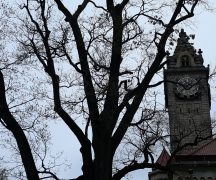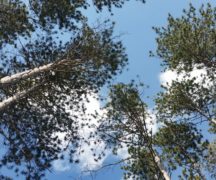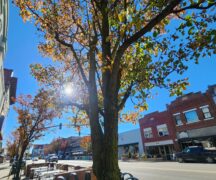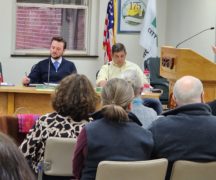By JAN LARSON McLAUGHLIN
BG Independent News
Adrien Lowien-Kirian understands the attachments people have to their trees. She herself is a lover of everything from giant oaks to compact redbuds.
“People really care about their trees. I get it,” said Lowien-Kirian, the new city arborist for Bowling Green.
Lowien-Kirian grew up near Marblehead, surrounded by wooded acreage full of black walnut, Chinkapin oaks and hackberry trees. As a child, she built tree houses, and spent hours on a tire swing that had been used by generations on a gigantic ash tree.
“It was a wonderful tree,” that was lost to ash borer beetles, she said.
As the city’s arborist, it’s Lowien-Kirian’s job to protect trees on public lands from disease spreading insects, and to help trees and utility projects to co-exist.
Though the connection may not seem obvious, Lowien-Kirian uses her sociology degree from Bowling Green State University in her work as an arborist.
“It’s kind of a round-about way to get here,” she said. But it actually makes sense, she added. Afterall, “a big part of urban forestry” involves sociology.
She comes to the position with five years of experience with the Toledo Metroparks focusing on natural resources.
“My love for working with trees grew and grew,” she said.
Lowien-Kirian then worked for five years as the woodlands specialist with Wood County Park District. While there, she became a certified arborist.
“I decided that was more of what I wanted to do,” she said. “I wanted to connect people to the world around them.”
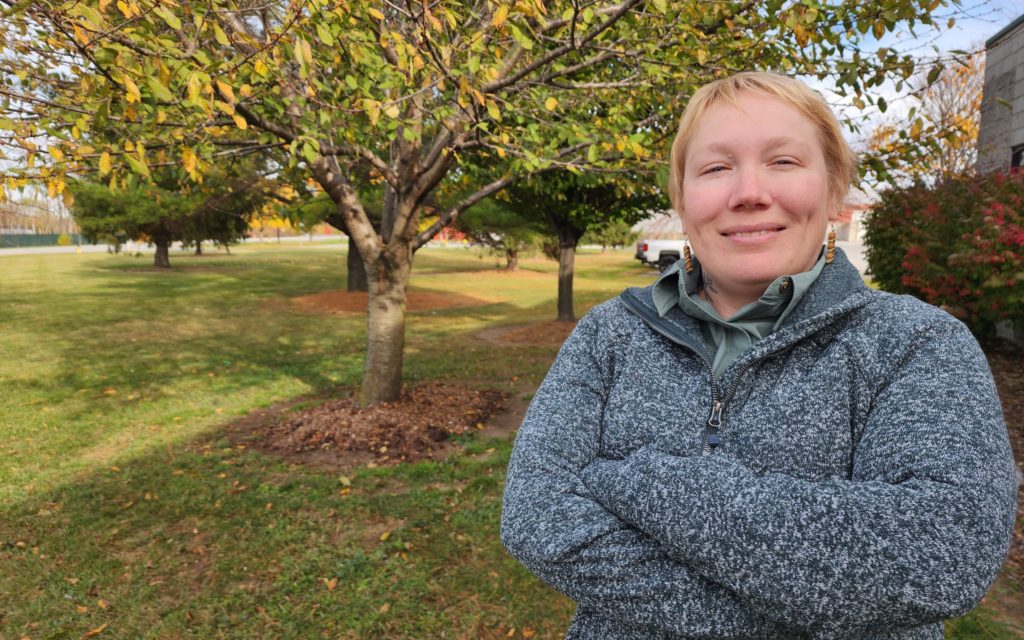
One way to do that is ensuring the quality and care of street trees, which the city plants along roadways in front of houses, and health of trees in public spaces that affects the urban canopy in Bowling Green.
Some of the threats to trees come from nature itself – like spotted lantern flies, oak wilt and spongy moths.
Unlike rural woodlands, urban forestry has more manmade competition.
“It requires a lot more management,” she said. The goal is for “natural trees and infrastructure to live in harmony.”
Lowien-Kirian encountered that issue with the current water/sewer project on West Wooster Street, which required the removal of 12 trees. She is working to identify replacement trees that are species better suited to lining streets.
“We want to be putting the right tree in the right spot,” she said.
In the past, silver maples were often planted in right-of-ways since they are fast-growing trees.
“A lot of the trees were way too big for those areas,” she said. “Those are backyard trees – not boulevard trees.”
So instead, the city will be planting trees with smaller canopies that are less likely to intrude on overhead wires, and smaller root systems that are less likely to cause problems with underground utilities.
Some examples of possible street trees as replacements on West Wooster include different types of maples, flowering dogwoods, redbuds, some types of buckeyes and serviceberry trees.
By making better choices in the future, the city can avoid chopping down trees for utility projects, Lowien-Kirian said.
“We never want to cut down trees just to do it,” she said.
The arborist understands the bond between people and trees.
“It’s a living thing that people grow with and become attached to,” she said.
Lorien-Kirian is also certified to lead prescribed burns, like those conducted occasionally to rid the meadow of invasive plant species in Wintergarden Park.
She works with the city’s tree commission, and is looking forward to offering educational programs for the public, and revitalizing the city’s Arbor Day celebrations with schools.
“I want to have an open line of communication with the residents,” she said. “I really care about the trees in the city.”


